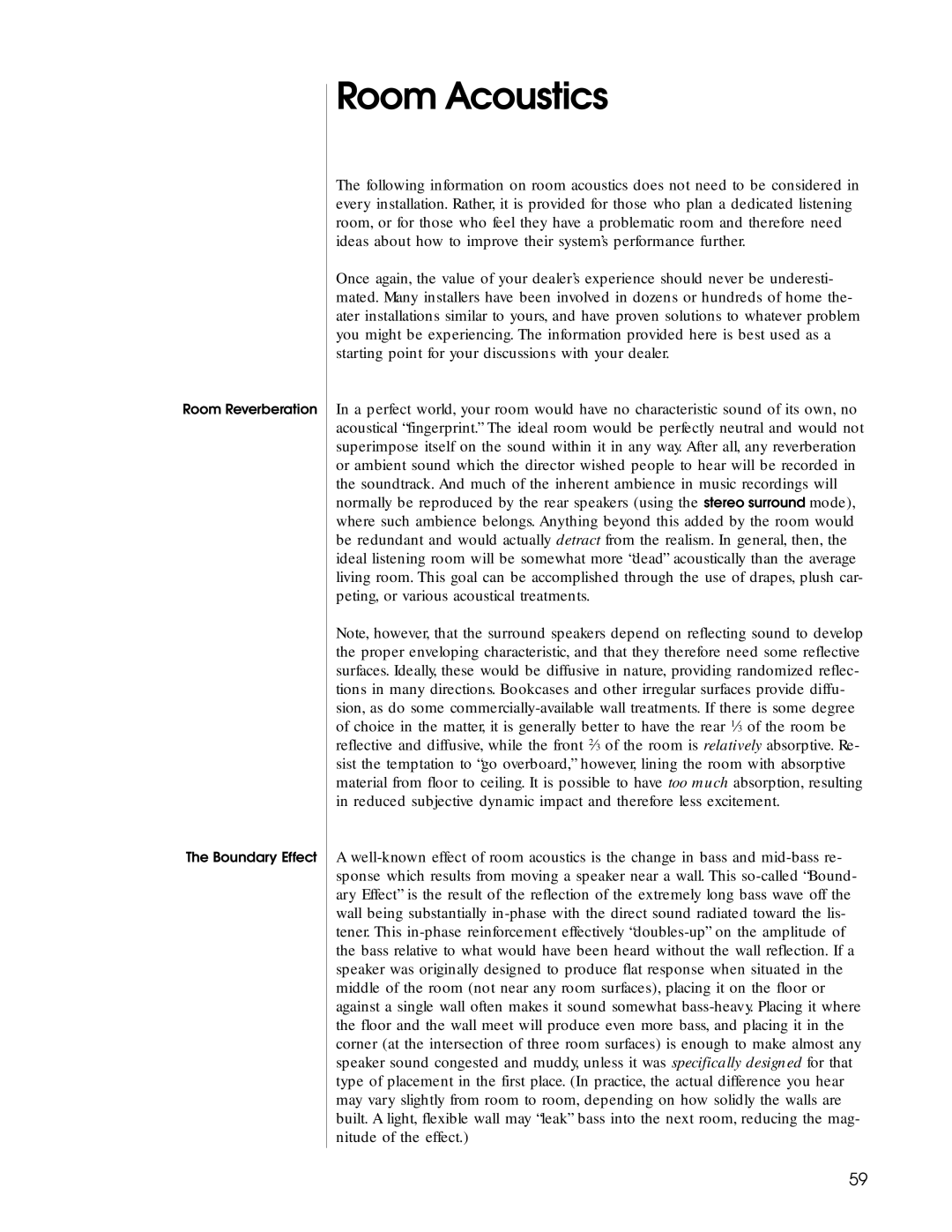Room Reverberation
The Boundary Effect
Room Acoustics
The following information on room acoustics does not need to be considered in every installation. Rather, it is provided for those who plan a dedicated listening room, or for those who feel they have a problematic room and therefore need ideas about how to improve their system’s performance further.
Once again, the value of your dealer’s experience should never be underesti- mated. Many installers have been involved in dozens or hundreds of home the- ater installations similar to yours, and have proven solutions to whatever problem you might be experiencing. The information provided here is best used as a starting point for your discussions with your dealer.
In a perfect world, your room would have no characteristic sound of its own, no acoustical “fingerprint.” The ideal room would be perfectly neutral and would not superimpose itself on the sound within it in any way. After all, any reverberation or ambient sound which the director wished people to hear will be recorded in the soundtrack. And much of the inherent ambience in music recordings will normally be reproduced by the rear speakers (using the stereo surround mode), where such ambience belongs. Anything beyond this added by the room would be redundant and would actually detract from the realism. In general, then, the ideal listening room will be somewhat more “dead” acoustically than the average living room. This goal can be accomplished through the use of drapes, plush car- peting, or various acoustical treatments.
Note, however, that the surround speakers depend on reflecting sound to develop the proper enveloping characteristic, and that they therefore need some reflective surfaces. Ideally, these would be diffusive in nature, providing randomized reflec- tions in many directions. Bookcases and other irregular surfaces provide diffu- sion, as do some
A
59
